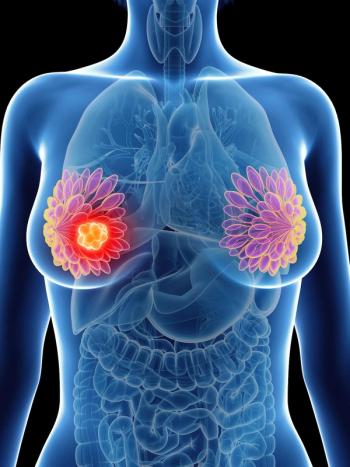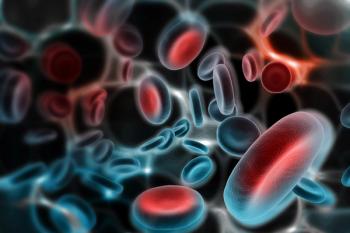
Oncology NEWS International
- Oncology NEWS International Vol 11 No 11
- Volume 11
- Issue 11
Secondary Breast Cancer in Pediatric Survivors
NIAGARA-ON-THE-LAKE, Ontario, Canada-Female survivors of childhood cancer are generally at increased risk of developing secondary breast cancer years after their initial disease. New research, presented at the 7th International Conference for Long-Term Complications of Treatment of Children and Adolescents for Cancer, hosted by Roswell Park Cancer Institute, is shedding light on this issue and helping practitioners determine how to best screen this population.
NIAGARA-ON-THE-LAKE, Ontario, CanadaFemale survivors of childhood cancer are generally at increased risk of developing secondary breast cancer years after their initial disease. New research, presented at the 7th International Conference for Long-Term Complications of Treatment of Children and Adolescents for Cancer, hosted by Roswell Park Cancer Institute, is shedding light on this issue and helping practitioners determine how to best screen this population.
"We have found that the greatest increased risk for secondary breast cancer, compared to women in the general population, appears 10 to 14 years after the initial diagnosis," said Lisa B. Kenney, MD, MPH, David B. Perini Jr. Quality of Life Clinic, Dana-Farber Cancer Institute. "This time frame matches the latency period for radiation-induced cancers, but we need to examine if therapeutic radiation exposure is the only factor to explain the risk of breast cancer in this population."
The Childhood Cancer Survivor Study (CCSS) is a resource designed to investigate the long-term effects of cancer treatment among 5-year survivors of childhood and adolescent cancer. For the purposes of this study, the records of 6,068 female participants were reviewed; 95 women had 111 pathology-confirmed breast cancers.
Eligible cases included 5-year survivors of Hodgkin’s disease, Wilms tumor, sarcoma (soft tissue and bone), central nervous system malignancies, non-Hodgkin’s lymphoma (NHL), acute leukemia, and neuroblastoma. The median age at breast cancer diagnosis was 34 years (range, 20 to 49) and the median time from initial cancer diagnosis was 19 years (range, 7 to 28).
"Using standardized incidence ratios and 95% confidence intervals, we found a statistically significant increased risk of breast cancer for survivors of Hodgkin’s disease, bone sarcomas, soft-tissue sarcomas, NHL, and Wilms tumor [see Figure]. This remained true even after accounting for prior treatment with chest irradiation," Dr. Kenney said.
She noted that the majority of the breast cancer cases were seen in survivors of Hodgkin’s disease." Women with prior pelvic radiation had a decreased risk of secondary breast cancer (P = .003), and there were no cases of breast cancer diagnosed in women who had a bone marrow transplant. Additionally, the data did not show any protection for girls diagnosed at a much younger age.
"It is generally believed that breast cancer risk is greatest for girls treated between the ages of 10 and 14. However, our data show that age at diagnosis is not protective," Dr. Kenney said.
In addition to treatment exposures, she said, the major determinants for secondary breast cancer include initial diagnosis and family cancer history.
Additional follow-up studies are needed, she said. The research team plans to examine the pathology, stage, and outcome of these secondary breast cancers to determine if these tumors have any unique features that can be used to better screen a relatively young group of women at high risk.
"At Dana-Farber Cancer Institute, we advocate mammography for survivors of childhood Hodgkin’s disease beginning approximately 8 years after initial diagnosis or when the survivor reaches age 18," Dr. Kenney said. "There are significant challenges to screening women in their 20s, but they are at risk and should be screened. We hope that as a group we can develop national screening guidelines to help female survivors identify secondary breast cancer at the earliest, most treatable stage."
Articles in this issue
about 23 years ago
Zoledronic Acid Reduces SREs in Solid Tumorsabout 23 years ago
Study Supports Wider Use of SLN Biopsy in Breast Cancerabout 23 years ago
Minorities Less Likely Than Whites to Receive Good Pain Careabout 23 years ago
Polyglutamate-Paclitaxel Controls Recurrent Ovarian Cancerabout 23 years ago
9cRA Shown to Reverse Premaliagnant Changes in Ex-Smokersabout 23 years ago
FDA Names New ODAC Chairabout 23 years ago
Neoadjuvant Weekly Paclitaxel Effective in Advanced Breast Cancerabout 23 years ago
Docetaxel Plus Gemcitabine Promising in Advanced Pancreatic Cancerabout 23 years ago
Polysaccharides Unique Targets for Immunotherapyabout 23 years ago
Genetic Fingerprinting Shows Distinct Sarcoma SubsetsNewsletter
Stay up to date on recent advances in the multidisciplinary approach to cancer.


















































































